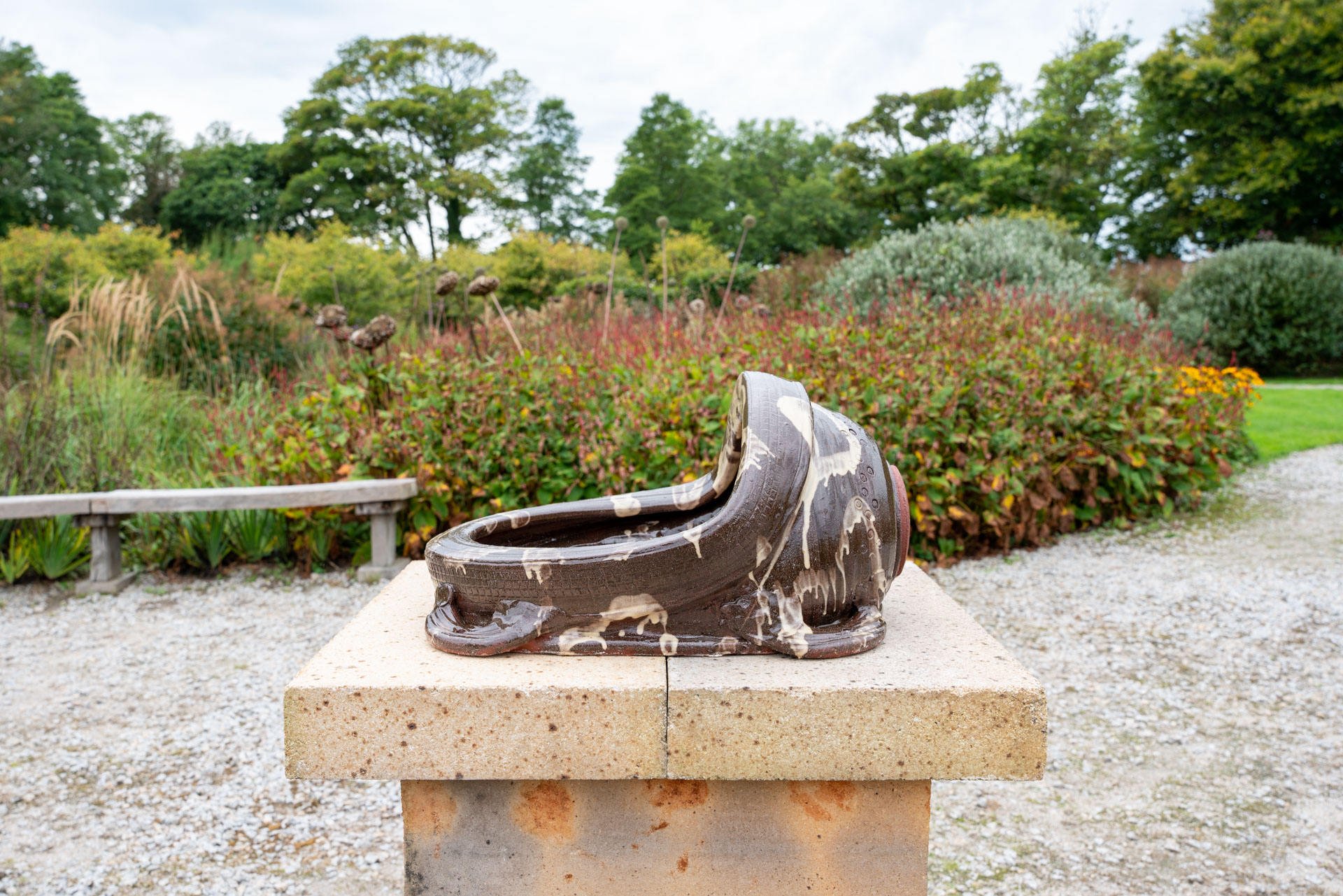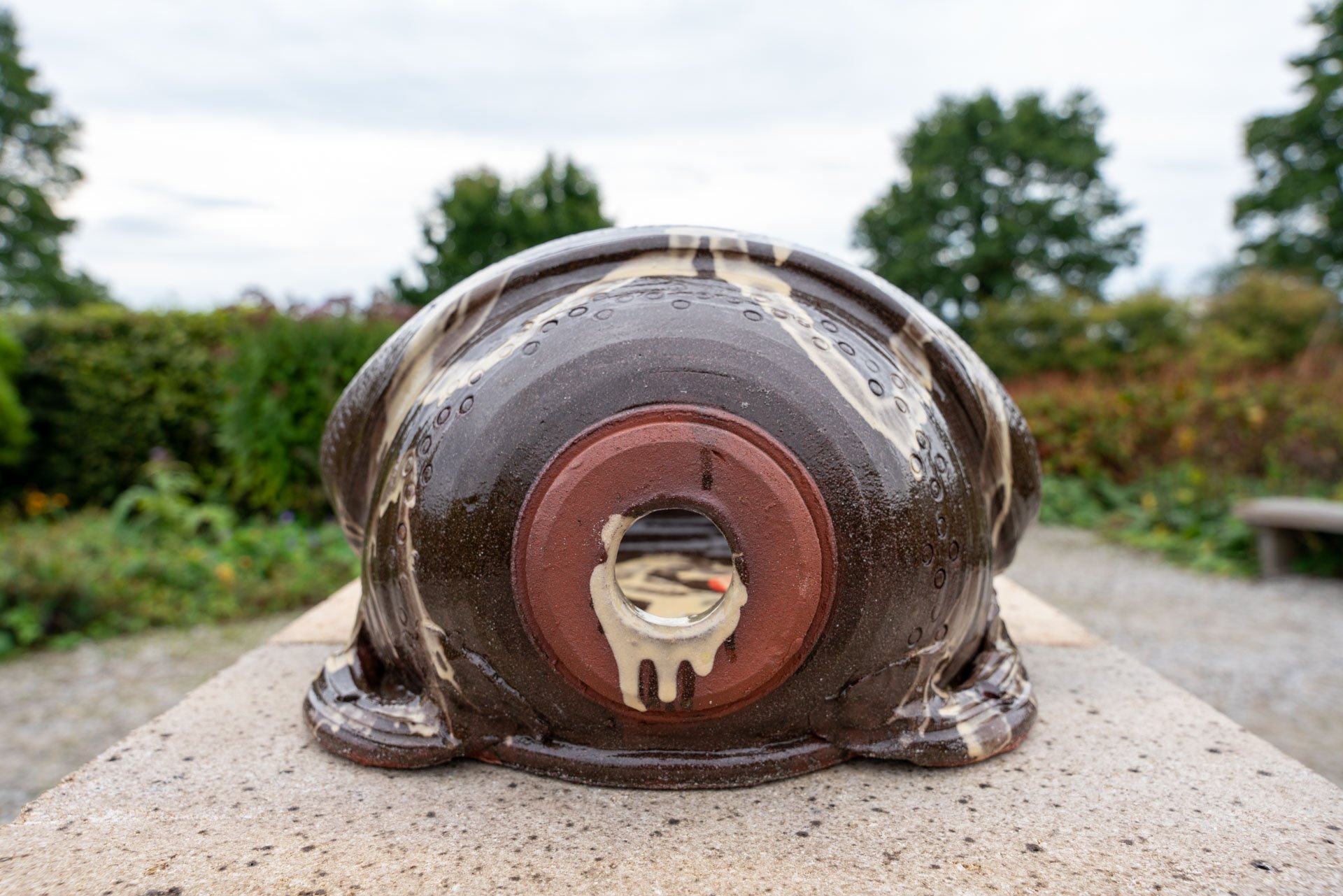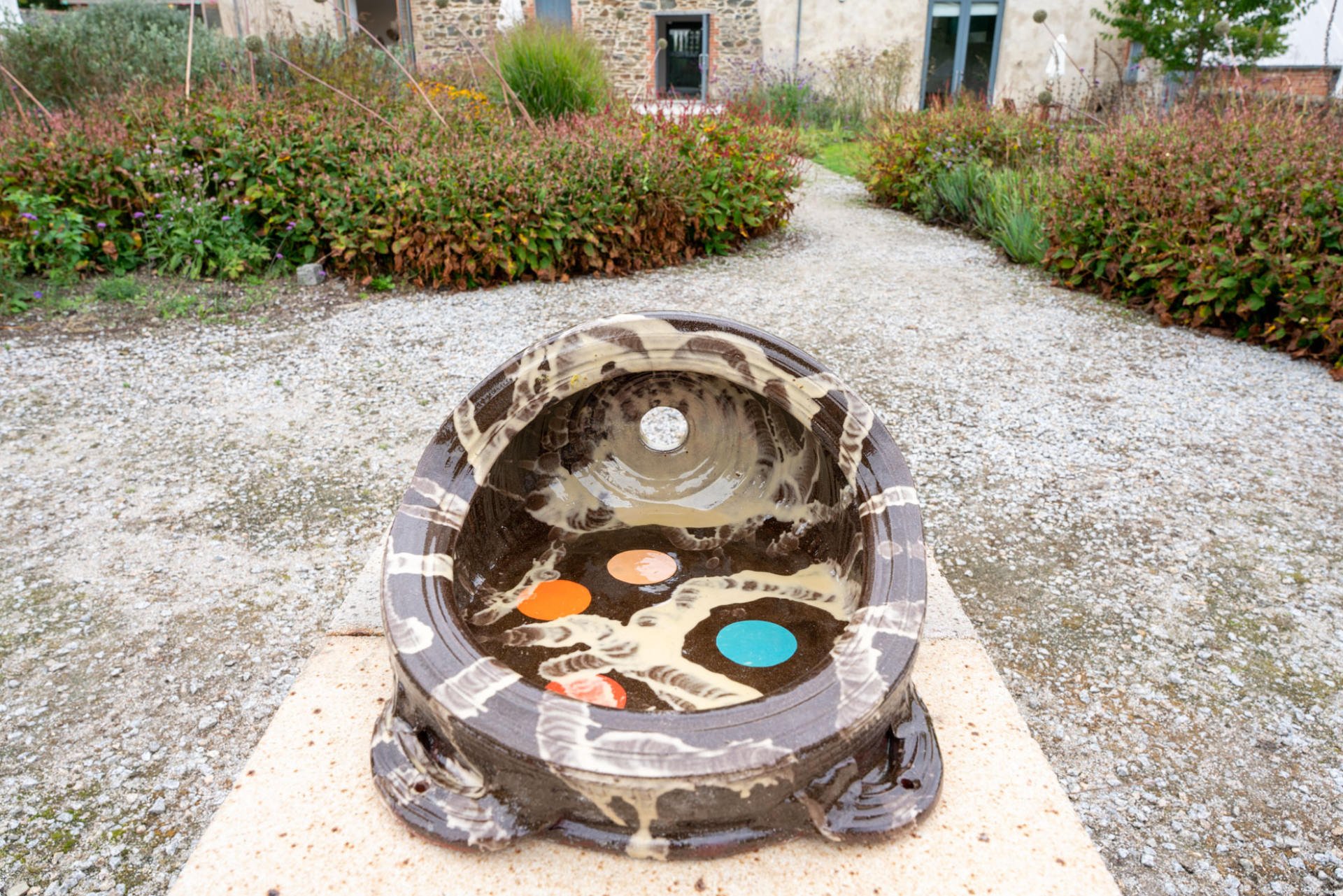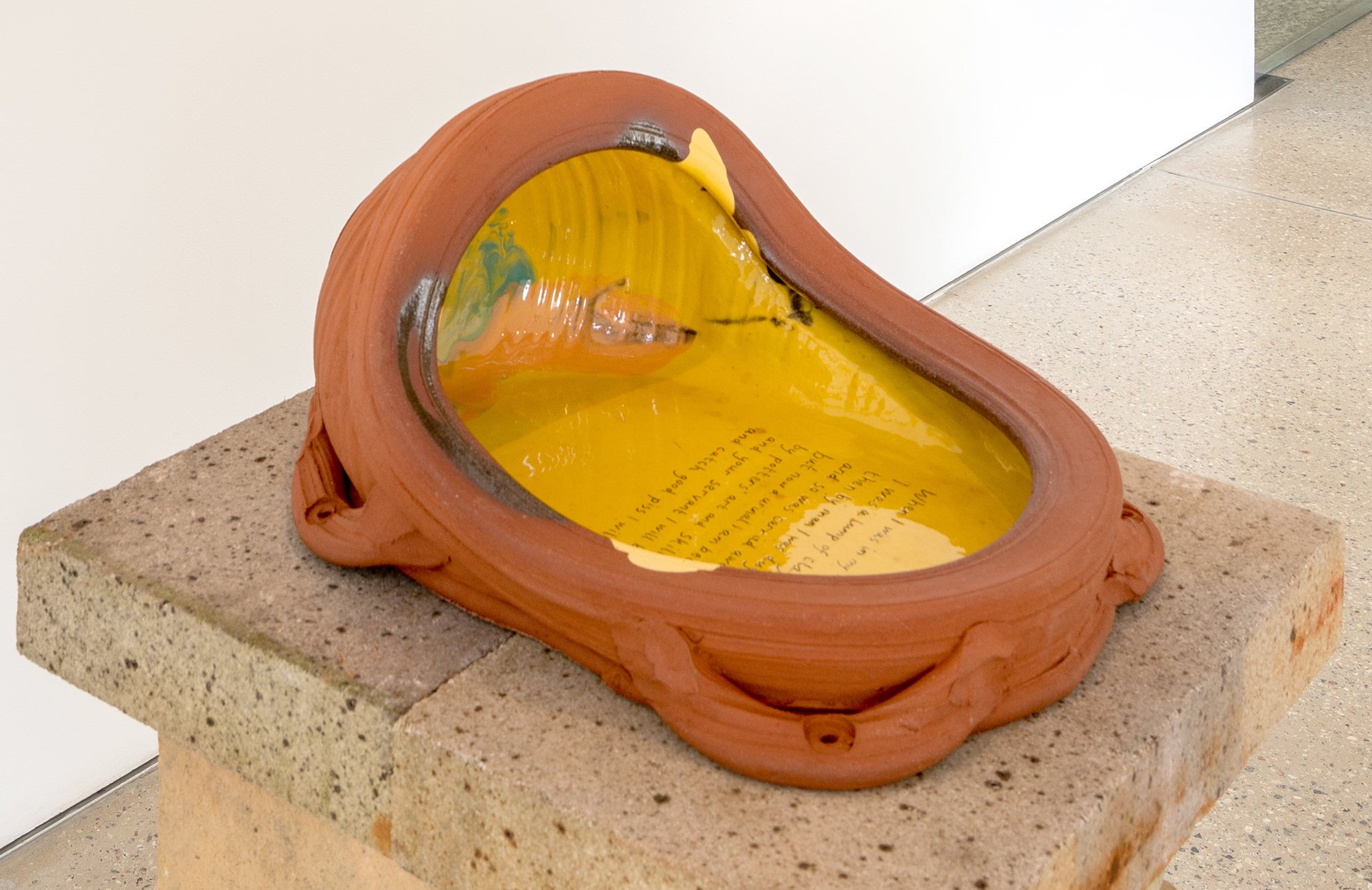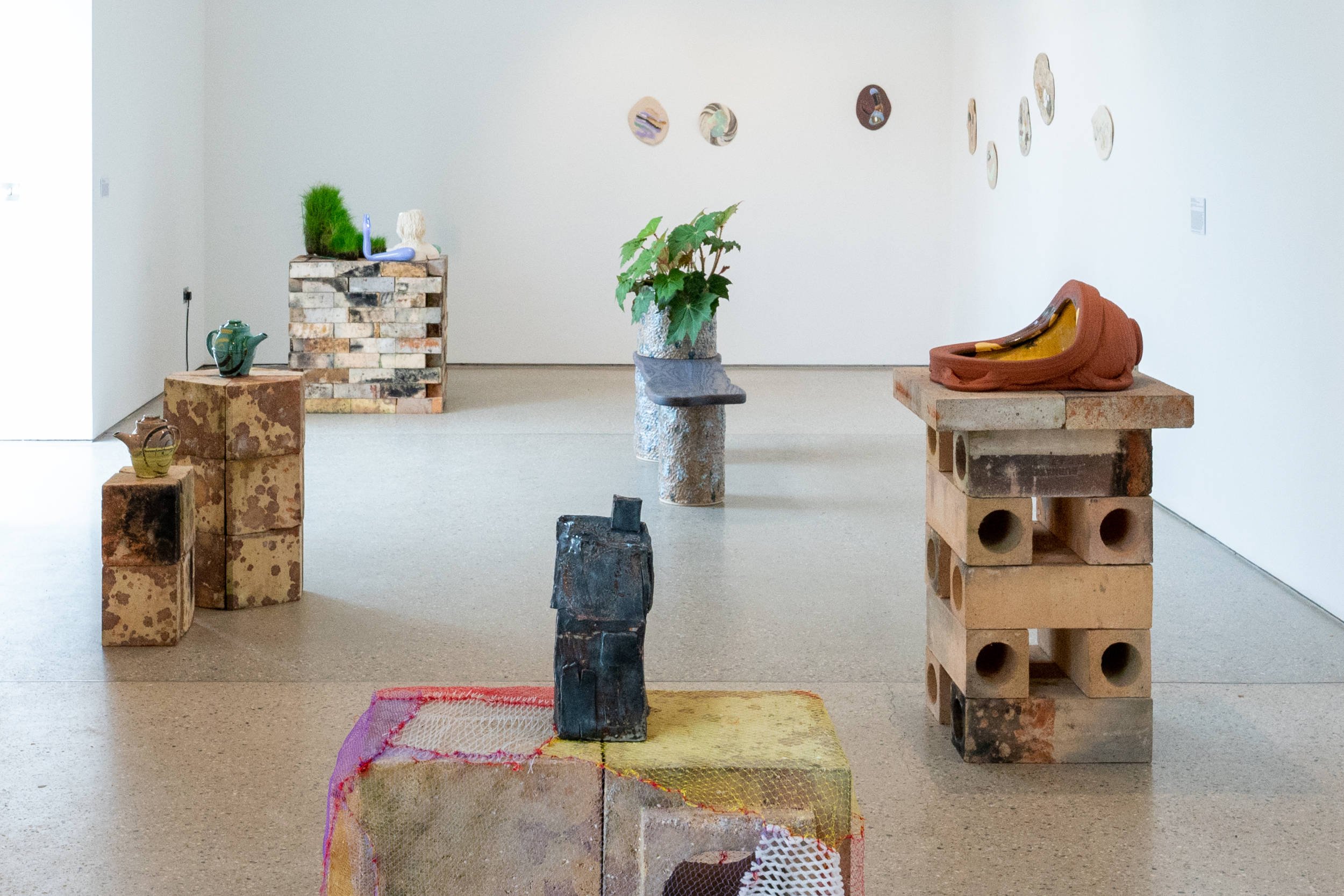Feet of Clay
10 September – 29 October 2022
Kestle Barton, Helford, Cornwall
Group exhibition curated by Rebecca Lewin, with artists: Attua Aparicio Torinos, Saelia Aparicio, Simon Bayliss, Brickfield, Phoebe Collings-James, Rosanna Martin
Clay plays an integral part in origin myths all over the world. Its tactility offers its own explanation for this: when wet, it is soft as flesh; when dried, it is as hard or as brittle as bones. It can survive intact for hundreds and thousands of years, recording the skills of potters, the introduction of new technologies, and the organisation of societies.
Humans have developed sophisticated methods of extracting clay from the ground, and with the growth of global distribution networks it has found its way into products as diverse as tiles, paper, pills, paint, insulation and toothpaste. These uses have shaped landscapes, including Cornwall’s clay country, where deep valleys have been quarried and high mountains of waste have been constructed. As we begin to make more direct connections between the causes and effects of human interactions with materials and the ecologies that produced them, clay offers a direct example of the removal of matter from one location to so many others across the planet in ways that are at once necessary and extractive.
Like the origins of the title of this exhibition – a dream described in the Old Testament – we are discovering that the systems we have become reliant on have been built on brittle foundations, and our belief that we are separate from nature – that we ourselves do not have feet of clay – is equally illusory.
Some of the artworks in this exhibition, all of which are new, are inspired by the cultures of humans, others by non-humans, and include recycled materials and living organisms as well as clay itself. Crucially, rather than observing from afar, they position the human body as embedded inside of and implicated in the use and impact of this material – they are forms that nourish, protect growth, collect waste, offer repose and record gestures. Together, they meditate on the tension between the negative spaces of mines and quarries and the positive act of creating that is made possible as a result of this displacement.
